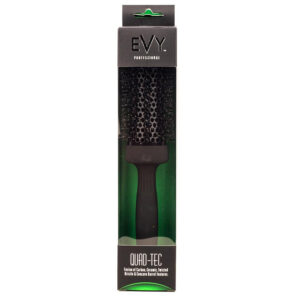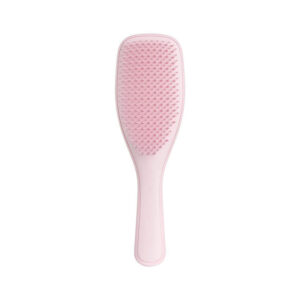The Ultimate Guide : Finding The Right Tool For Your Hair
Finding the right tool for your hair type
When it comes to hair care, the right brush can make all the difference. Choosing the correct hairbrush isn’t just about avoiding tangles; it’s about maintaining hair health, achieving your desired style and preventing unnecessary damage. With so many different types of hair brushes on the market it can be overwhelming to find one that suits your needs.
In this guide we will break down the various types of hair brushes, their purposes and which ones work best for different hair types and styling needs
Why does the right hair brush matter?
The righ hair brush plays an essential role in your overall hair health, it helps detangle, smooth and style your hair without causing breakage or frizz. The wrong brush on the other hand can lead to split ends, damage and an unhealthy scalp. Understanding the different types of brushes and their benefits will not only improve your styling routine but also promote healthier hair over time.
Types of hair brushes and their uses
Here are the most common types of hair brushes, each designed for specific hair types or styling goals:

- Paddle Brush
A paddle brush has a large, flat surface making it ideal for detangling and smoothing long, straight hair. The wide base allows it to cover more surface area, making it easier to work through large sections of hair
Best for: Long, straight or thick hair
Benefits: Detangles without causing breakage, great for blow drying straight hair

2. Round Brush
Round brushes come in various sizes and are typically used for styling while blow drying. The size of the barrel will determine the type of curl or wave you can create. Smaller barrels are better for tighter curls, while large barrels are ideal for creating volume and loose waves.
Best for: Creating volume, curls and waves
Benefits: Adds body and bounce, perfect for blow drying hair with volume

3. Detangling Brush
Detangling brushes are specifically designed to glide through the hair without pulling or snagging, making them perfect for wet hair or sensitive scalps. They often have flexible bristles that help prevent breakage and split ends
Best for: All hair types, especially wet or fragile hair
Benefits: Detangles without pulling, gentle on hair, reduces breakage
How to choose the right hair brush for your hair type
Your hair type and texture play a big role in determining which brush is right for you. Here’s a quick guide to help you choose the perfect brush based on your hair type:
Straight hair
Best brushes: Paddle brush, boar bristle brush, vent brush
Why: Straight hair benefits from brushes that smooth the hair and prevent static. Paddle brushes help detangle, while boar bristles distribute oils for extra shine
Curly hair
Best brushes: Wide tooth comb, detangling brush
Why: Curly hair is prone to tangling and a wide tooth comb or detangling brush will gently work through knots without disrupting the curl pattern. Use these brushes on wet hair with conditioner for best results
Fine or Thin Hair
Best brushes: Boar bristle brush, teasing brush, cushion brush
Why: Boar bristles are great for adding shine without weighing down the fine hair. A teasing brush can help create volume and lift at the roots, while a cushion brush is gentle enough to prevent breakage
Thick or Coarse
Best brushes: Paddle brush, round brush, vent brush
Why: Thick hair needs a brush that can detangle and smooth without pulling. Paddle brushes work well to detangle, while round brushes add volume during blow drying
Frizzy hair
Best brushes: Boar bristle brush, paddle brush
Why: Frizzy hair benefits from brushes that help distribute oils and smooth the cuticle. Boar bristle brushes can tame frizz while giving hair a sleek, shiny appearance
Brush Maintenance: How to keep your brushes clean
Keeping your hair brushes clean is essential for maintaining healthy hair. Over time brushes collect oils, product build up and dead skin cells which can transfer back to your hair, causing it to look dull and greasy.
How to clean your brushes effectively:
- Remove Hair: after each use remove any hair caught in the bristles with a comb or your fingers
- Soak and scrub: Once a month soak your brush in warm water mixed with a few drops of shampoo. Use an old toothbrush to gently scrub the base and bristles to remove any build-up
- Rinse and dry: rinse the brush thoroughly and allow it to air dry completely before using it again
The right brush for beautiful, healthy hair
Choosing the right hair brush for your hair type can significantly impact the health, shine and overall appearance of your hair. Whether you’re trying to add volume, tame frizz or simply detangle with ease, using the right tool is key to achieving your desired look. By understanding the different types of hair brushes and their benefits you can ensure that your hair care routine is a effective and gentle as possible
